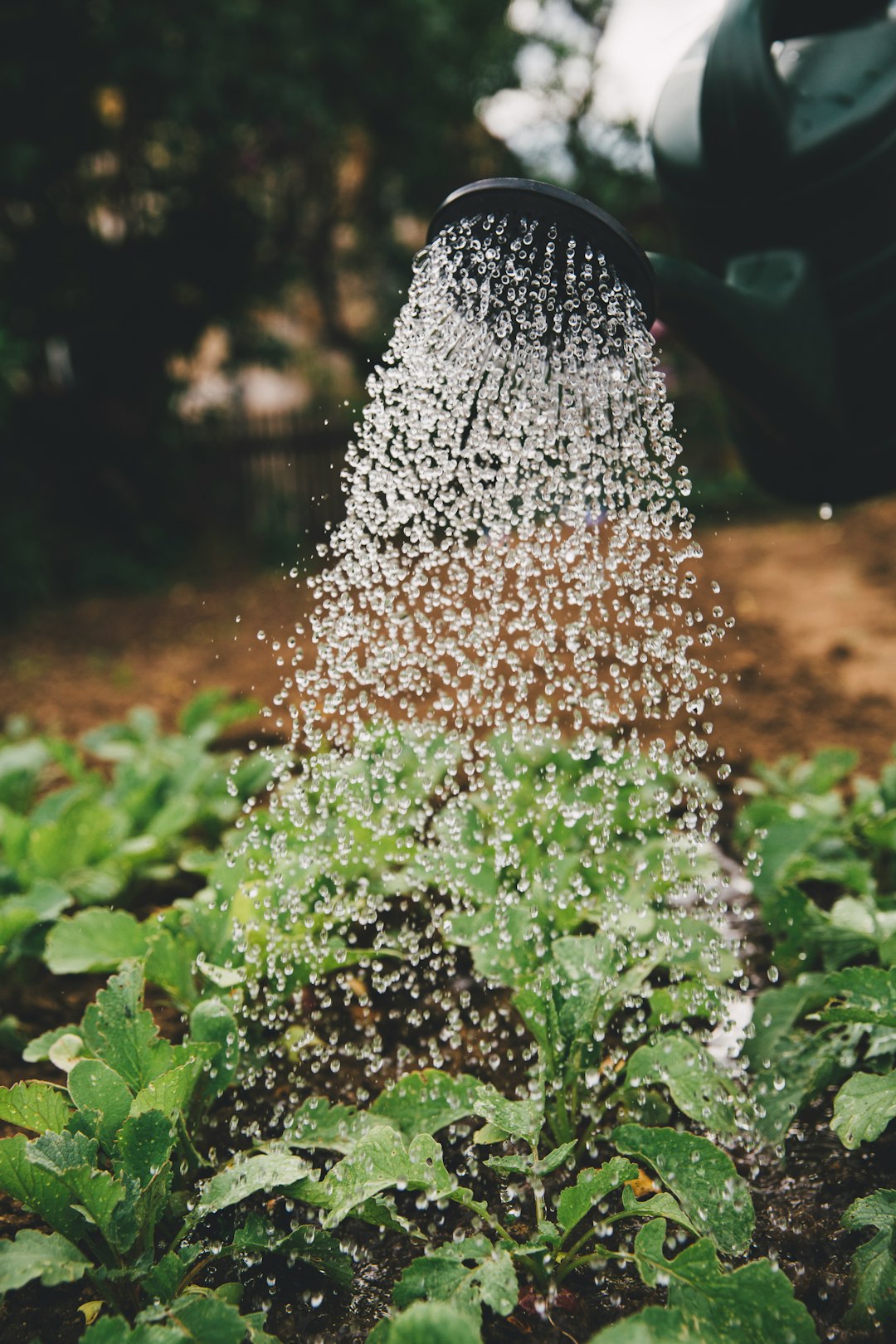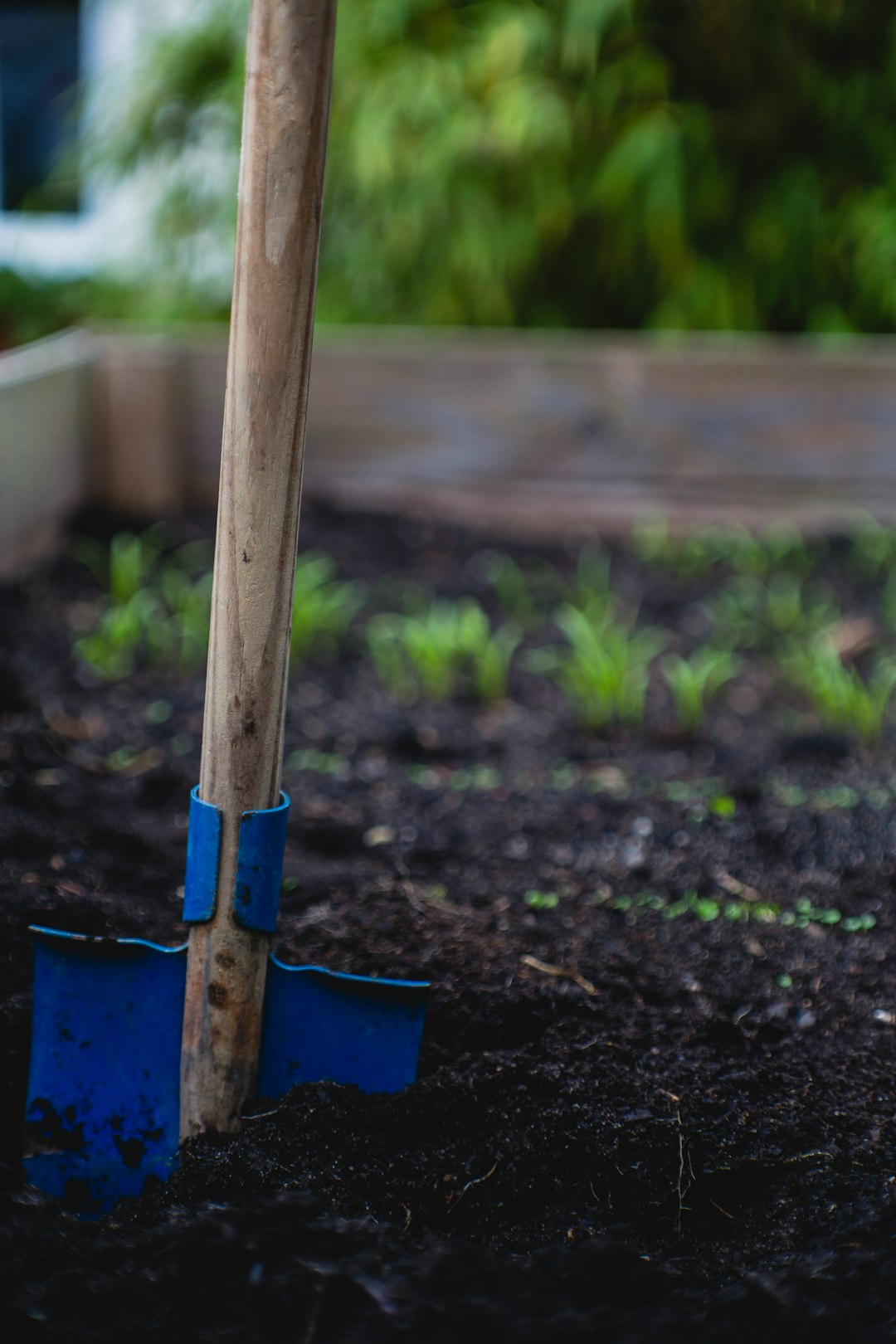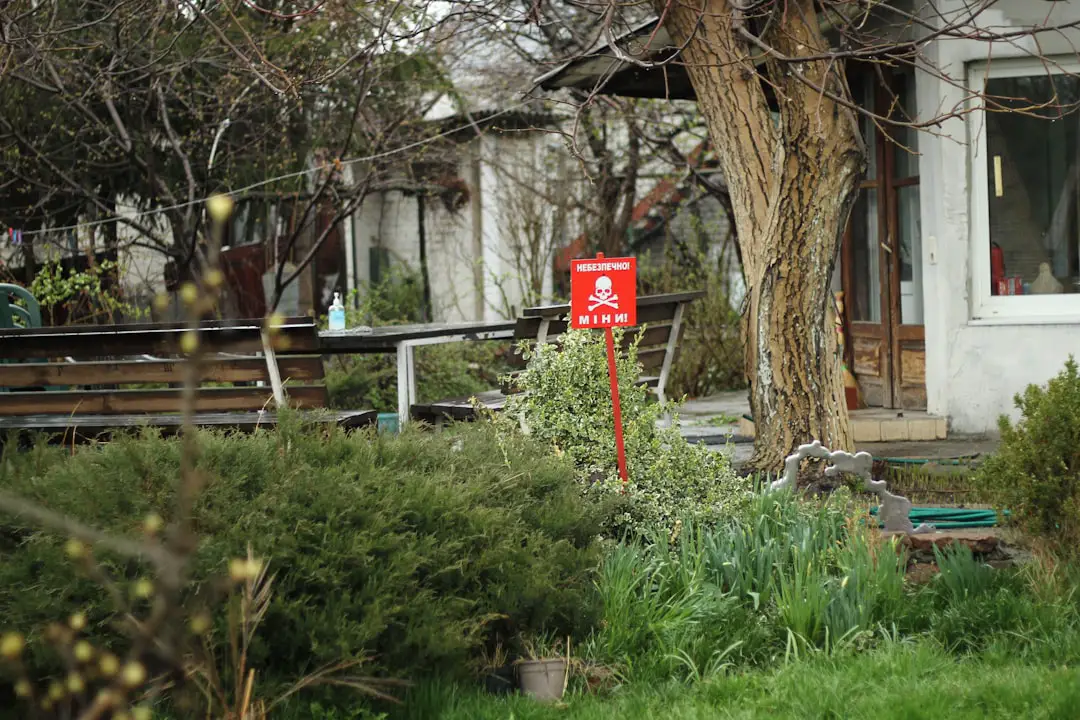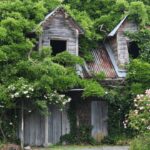Support our educational content for free when you purchase through links on our site. Learn more
Starting a community garden is more than just digging in the dirt; it’s about cultivating connections, growing fresh produce, and transforming your neighborhood into a vibrant green space! Did you know that community gardens can increase property values by up to 9%? 🌼 Imagine the joy of harvesting your own tomatoes while bonding with neighbors and sharing gardening tips. In this article, we’ll guide you through 7 essential steps to kickstart your community garden, ensuring it thrives and brings your community together. Ready to dig in? Let’s get started!
Key Takeaways
- Gather Your Gardening Crew: Form a dedicated team to share responsibilities and ideas.
- Find the Perfect Plot: Secure a sunny, accessible location for your garden.
- Create a Garden Plan: Design a layout that maximizes space and productivity.
- Establish Rules: Set clear guidelines for maintenance and plot assignments.
- Choose the Right Plants: Select crops that thrive in your climate and soil.
- Engage the Community: Host events and workshops to foster involvement.
- Plan for Sustainability: Develop strategies for long-term maintenance and success.
Ready to equip your garden with the best tools? 👉 Shop Gardening Tools on: Amazon | Walmart | Home Depot 🌿
Table of Contents
- Quick Tips and Facts
- The Roots of Community Gardening: A Brief History
- What Exactly Is a Community Garden?
- The Benefits of Starting a Community Garden
- Essential Steps to Kickstart Your Community Garden
- Engaging Your Community: Tips for Involvement
- Learn More About Gardening: Horticulture Degrees and Resources
- Request Program Information for Community Gardening Initiatives
- Related Stories: Inspiring Community Garden Projects
- Continuing Education in Gardening: College of Continuing & Professional Studies
- Conclusion
- Recommended Links
- FAQ
- Reference Links
Quick Tips and Facts
To start a successful community garden, check out our related article on How to Start a Sustainable Community Garden: 10 Essential Steps 🌱. Here are some quick tips and facts to get you started:
- Community gardens can be a great way to bring people together and provide access to fresh produce 🥗.
- They can also help to beautify neighborhoods and provide a sense of community 🌟.
- Before starting a community garden, it’s essential to find a suitable location with adequate sunlight and water 💧.
- You’ll also need to secure funding and establish rules for the garden 📝.
- Consider reaching out to local organizations, such as the National Gardening Association, for resources and support 🌿.
The Roots of Community Gardening: A Brief History

Community gardening has a rich history that dates back to the 19th century 📆. The concept of community gardening originated in Europe, where people would come together to grow their own food and share knowledge and resources 🌎. In the United States, community gardening gained popularity during World War I, when people were encouraged to grow their own food to support the war effort 🌟. Today, community gardening is a global phenomenon, with gardens in almost every country 🌍.
Early Beginnings
The early beginnings of community gardening were often driven by necessity 🌾. During times of war and economic hardship, people came together to grow their own food and support one another 🌟. This sense of community and cooperation is still at the heart of community gardening today 🌱.
Modern Community Gardening
Modern community gardening is a vibrant and diverse movement 🌈. Gardens can be found in urban, suburban, and rural areas, and they come in all shapes and sizes 🌳. From small plots in backyard gardens to large-scale urban farms, community gardening is a powerful way to bring people together and promote sustainability 🌿.
What Exactly Is a Community Garden?
A community garden is a shared space where people come together to grow their own food and connect with others 🌱. Community gardens can take many forms, from small plots in backyard gardens to large-scale urban farms 🌳. They can be used to grow a wide variety of fruits, vegetables, and flowers, and they often serve as a hub for community activity 🌟.
Types of Community Gardens
There are many different types of community gardens, including:
- Urban gardens: These gardens are located in cities and are often used to grow a wide variety of fruits, vegetables, and flowers 🌆.
- Rural gardens: These gardens are located in rural areas and are often used to grow larger quantities of food 🌾.
- School gardens: These gardens are located at schools and are used to educate children about gardening and sustainability 📚.
- Therapeutic gardens: These gardens are used for therapeutic purposes, such as rehabilitation and stress relief 🌿.
The Benefits of Starting a Community Garden
Starting a community garden can have a wide range of benefits, from providing access to fresh produce to promoting community engagement 🌟. Some of the benefits of starting a community garden include:
- Improved access to fresh produce: Community gardens can provide a source of fresh, healthy food for people who may not have access to it otherwise 🥗.
- Increased community engagement: Community gardens can serve as a hub for community activity, bringing people together and promoting social connections 🌟.
- Environmental benefits: Community gardens can help to promote sustainability and reduce the environmental impact of food production 🌿.
- Economic benefits: Community gardens can also have economic benefits, such as providing a source of income for gardeners and supporting local businesses 📈.
Essential Steps to Kickstart Your Community Garden
Starting a community garden requires careful planning and execution 📝. Here are the essential steps to kickstart your community garden:
- Gather Your Gardening Crew: Recruit a team of dedicated gardeners to help with planning and maintenance 🌟.
- Find the Perfect Plot of Land: Identify a suitable location for your garden, with adequate sunlight and water 💧.
- Create a Garden Plan: Develop a plan for your garden, including the layout, plant selection, and maintenance schedule 📅.
- Secure Funding and Resources: Secure funding and resources, such as tools, seeds, and fertilizers, to support your garden 🌱.
- Establish Rules and Responsibilities: Establish rules and responsibilities for gardeners, including maintenance schedules and plot assignments 📝.
- Choose Your Plants Wisely: Select a variety of plants that are well-suited to your climate and soil conditions 🌿.
- Plan for Maintenance and Sustainability: Develop a plan for maintaining your garden, including irrigation, pest management, and waste reduction 🌸.
Engaging Your Community: Tips for Involvement
Engaging your community is critical to the success of your community garden 🌟. Here are some tips for involving your community:
- Host events and workshops: Host events and workshops to educate people about gardening and sustainability 📚.
- Create a social media presence: Create a social media presence to promote your garden and engage with your community 📱.
- Partner with local organizations: Partner with local organizations, such as schools and community groups, to promote your garden and involve more people 🌈.
- Offer plot rentals: Offer plot rentals to individuals and families, providing them with a space to grow their own food 🌾.
Learn More About Gardening: Horticulture Degrees and Resources
If you’re interested in learning more about gardening, there are many resources available 📚. Consider pursuing a degree in horticulture or a related field, such as environmental science or agriculture 🌿. You can also check out online resources, such as the National Gardening Association, for tips and advice on gardening 🌱.
Request Program Information for Community Gardening Initiatives
If you’re interested in starting a community garden, you can request program information from organizations such as the National Gardening Association 🌟. You can also check out online resources, such as the Community Gardening website, for tips and advice on starting a community garden 🌱.
Related Stories: Inspiring Community Garden Projects
There are many inspiring community garden projects around the world 🌎. From urban gardens in cities to rural gardens in developing countries, community gardens are making a difference in people’s lives 🌟. Check out stories from organizations such as the National Gardening Association and the Community Gardening website for inspiration and ideas 🌱.
Continuing Education in Gardening: College of Continuing & Professional Studies
If you’re interested in continuing your education in gardening, consider checking out the College of Continuing & Professional Studies 📚. They offer a wide range of courses and programs in horticulture, environmental science, and related fields 🌿. You can also check out online resources, such as the National Gardening Association, for tips and advice on gardening 🌱.
Conclusion

Starting a community garden is not just about growing plants; it’s about cultivating relationships, fostering community spirit, and providing access to fresh produce 🌱. By following the essential steps outlined in this article—from gathering your gardening crew to establishing rules and responsibilities—you can create a thriving garden that benefits everyone involved. Remember, the journey may have its challenges, but the rewards are plentiful!
In summary, community gardens:
- Promote social interaction and community engagement 🌟.
- Provide access to fresh, healthy food 🥗.
- Enhance local biodiversity and contribute to environmental sustainability 🌿.
So, roll up your sleeves, gather your neighbors, and start planting the seeds of change in your community! 🌼
Recommended Links
- 👉 Shop Gardening Tools on: Amazon | Walmart | Home Depot
- Books on Community Gardening:
FAQ

What are the first steps in planning a community garden?
Initial Planning Steps
- Gather a Group: Start by forming a planning committee with at least 3-5 interested individuals. This group will help to brainstorm ideas and share responsibilities.
- Identify Goals: Discuss what you want to achieve with the garden—food production, education, beautification, etc.
- Community Engagement: Survey local residents to gauge interest and gather support. This can help in forming a larger gardening community.
Read more about “How to Start a Sustainable Community Garden: 10 Essential Steps 🌱 …”
How do you find land for a community garden?
Locating Suitable Land
- Research Local Vacant Lots: Look for available land in your community, such as vacant lots or underutilized spaces.
- Contact Landowners: Use local government resources to identify landowners. Approach them with a proposal for using the land for a community garden.
- Check Zoning Laws: Ensure that the land is zoned for gardening activities. This can often be verified through your local zoning office.
Read more about “What is the Power of Community Gardens? 20 Transformative Benefits 🌱 …”
How do you get funding for a community garden?
Securing Financial Support
- Grants and Sponsorships: Look for grants specifically aimed at community gardening or urban agriculture. Organizations like the American Community Gardening Association often have resources.
- Fundraising Events: Host events such as plant sales, bake sales, or community dinners to raise funds.
- Local Business Donations: Approach local businesses for sponsorship or in-kind donations like tools, seeds, or soil.
Read more about “How Is a Community Garden Run? 7 Essential Insights 🌱 …”
What are the best plants to grow in a community garden?
Plant Selection
- Vegetables: Consider growing popular vegetables like tomatoes, peppers, and cucumbers, which are generally easy to cultivate and widely appreciated.
- Herbs: Herbs like basil, cilantro, and parsley can be great additions, as they require minimal space and can enhance the flavor of many dishes.
- Flowers: Incorporating flowers can attract pollinators and beautify the space. Sunflowers and marigolds are excellent choices.
Read more about “What is a Community Garden? 10 Inspiring Benefits & Ideas 🌱 …”
How do you organize and manage a community garden?
Garden Management
- Establish Rules: Create a set of rules that outline responsibilities, plot assignments, and maintenance schedules.
- Regular Meetings: Hold regular meetings to discuss progress, address concerns, and plan events.
- Assign Roles: Designate specific roles for members, such as treasurer, secretary, or maintenance coordinator, to ensure smooth operation.
Read more about “How to Start a Community Garden at School: 9 Essential Steps 🌱 …”
What are the benefits of joining a community garden?
Advantages of Participation
- Access to Fresh Produce: Members have the opportunity to grow and harvest their own fruits and vegetables, promoting healthier eating habits 🥗.
- Community Building: Joining a community garden fosters connections with neighbors and builds a sense of belonging 🌟.
- Learning Opportunities: Members can learn gardening techniques, sustainability practices, and even cooking skills from one another.
Read more about “What are the benefits of joining a community garden?”


